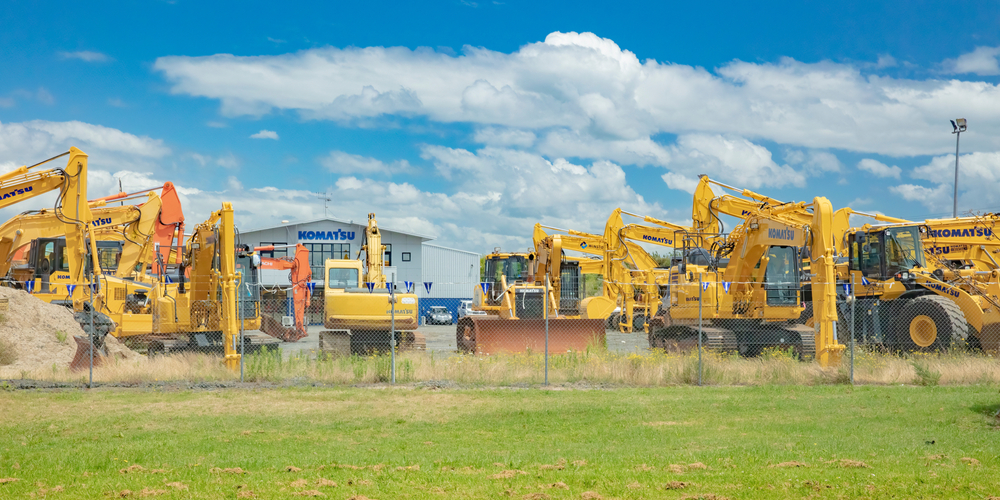Understanding the importance of construction equipment repair is crucial for maintaining operational efficiency and reducing costs in the construction industry.
Regular maintenance not only extends the life of the machinery but also ensures that projects are not hindered by unexpected breakdowns.
Businesses and equipment managers must prioritize these practices to safeguard their investments and uphold project timelines.
Step 1: Regular Cleaning and Inspection
Regular cleaning and inspection are foundational to prolonging the life and efficiency of construction equipment. Here’s how to effectively maintain various machinery:
Daily Cleaning Routine: Remove dirt, debris, and residues daily to prevent buildup that can impair machinery functions. Use appropriate cleaning tools and solutions depending on the machinery type to avoid damage to sensitive components.
Weekly Detailed Inspections: Conduct thorough inspections weekly, focusing on key areas such as hydraulics, engines, and electrical systems. Ensure all safety guards are in place and check for any signs of wear or leaks.
Monthly Comprehensive Checks: Examine undercarriages, fluid levels, and filter systems. Check for structural damages including cracks in the welds or frame.
Inspection Checklist: Develop a detailed checklist that includes:
- Checking oil and hydraulic fluid levels for contamination signs.
- Inspecting hoses and belts for cracks or brittleness.
- Testing the electrical system functionality and battery life.
Step 2: Timely Replacement of Parts
To avoid sudden equipment failures, timely part replacement is key. Here’s how to manage this process effectively:
Identify Wear Patterns: Regularly check parts known for quick wear, such as tires, belts, and filters. Understand the typical lifespan of these parts under various operating conditions.
Stock Management: Maintain a log of spare parts and manage inventory to ensure critical parts are always available when needed.
Quality Parts: Opt for genuine parts to ensure compatibility and longevity. Explain the risks associated with aftermarket parts, including potential malfunctions and higher long-term costs.
Replacement Schedule: Develop a replacement schedule based on the equipment’s usage rate and the manufacturer’s recommendations.
Step 3: Proper Lubrication Practices
Effective lubrication is essential for the smooth operation of construction equipment:
Select Correct Lubricants: Use lubricants specified by the manufacturer to prevent premature wear and tear. Different machinery may require different types of lubricants, based on operational needs and environmental conditions.
Lubrication Schedule: Implement a lubrication schedule that prevents over- or under-lubrication. Document each lubrication task to keep track of maintenance history.
Training on Lubrication: Educate maintenance staff on proper lubrication techniques and the importance of using the correct amount of lubricant.
Step 4: Training for Operators
Operator training is vital for the efficient and safe use of construction equipment:
Regular Training Programs: Conduct regular training sessions to keep operators updated on the latest operational procedures and safety protocols.
Simulated Training Environments: Use simulations to train operators on handling complex machinery in a controlled setting.
Feedback Mechanism: Implement a feedback system where operators can report potential issues or suggest improvements based on their day-to-day experiences.
Step 5: Implementing a Preventive Maintenance Program
A preventive maintenance (PM) program ensures that equipment is regularly checked and maintained:
Maintenance Schedules: Develop and adhere to a PM schedule tailored to each piece of equipment’s use and criticality.
Documentation: Keep detailed records of all maintenance activities, parts changes, and inspections.
Technology Integration: Utilize maintenance management software to automate scheduling, track equipment status, and store maintenance records.
Continuous Improvement: Regularly review and update the PM program based on equipment performance data and maintenance logs to identify areas for improvement.
Safety Protocols
Ensuring safety during the maintenance of construction equipment is paramount. Neglecting safety protocols can lead to accidents, causing injury and even death, besides damaging the equipment. Here’s how to ensure safety while performing equipment maintenance:
1. Personal Protective Equipment (PPE)
Always wear appropriate PPE, including gloves, eye protection, hard hats, and hearing protection, depending on the task. For example, when cleaning heavy machinery, face shields and overalls protect against flying debris and chemical splashes.
2. Tool and Equipment Handling
Use the correct tools and equipment for each maintenance task. Ensure that all tools are in good condition and workers are trained in their proper use. For instance, using a torque wrench ensures bolts are tightened to specifications, preventing future failures.
3. Lockout-Tagout (LOTO) Procedures
Implement LOTO procedures to ensure that machinery is properly shut down and cannot be started unintentionally during maintenance. This is crucial when working on electrical systems or moving parts that could pose hazards if activated.
4. Work Area Safety
Maintain a clean and organized work area to prevent accidents caused by slips, trips, or falls. Ensure that all spills are cleaned up immediately and tools are stored safely when not in use.
Environmental Considerations
Proper maintenance of construction equipment not only extends the lifespan of the machinery but also has significant environmental benefits. Here’s how proper maintenance practices can help minimize the environmental impact:
1. Emission Control
Regular maintenance of engine components and systems ensures that machinery operates efficiently, reducing fuel consumption and minimizing emissions. For instance, replacing air filters regularly can prevent inefficient fuel burn and excessive emissions of pollutants.
2. Fluid Management
Proper disposal of old fluids and lubricants is essential to prevent environmental contamination. Set up a system for collecting and disposing of hazardous materials according to local regulations. Use environmentally friendly fluids when possible.
3. Noise Reduction
Maintaining equipment can also reduce noise pollution. Well-lubricated and properly functioning machinery operates quieter, lessening the noise impact on nearby communities and wildlife.
4. Energy Efficiency
Regular maintenance ensures that equipment operates at optimal efficiency. For example, keeping hydraulic systems in good condition can prevent energy loss due to friction and resistance in moving parts.
Conclusion
Maintaining construction equipment through these five straightforward steps can lead to significant savings and enhanced operational efficiency.
Adhering to regular cleaning and inspection routines, timely parts replacement, proper lubrication, operator training, and implementing a preventive maintenance program can ensure that the machinery of these construction businesses remains in prime condition.
We encourage all construction professionals to adopt these practices to minimize downtime and maximize productivity.









